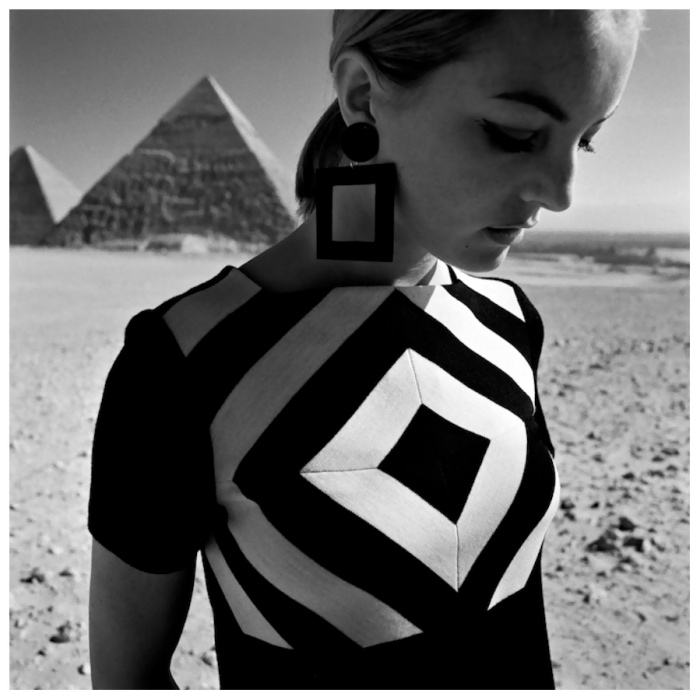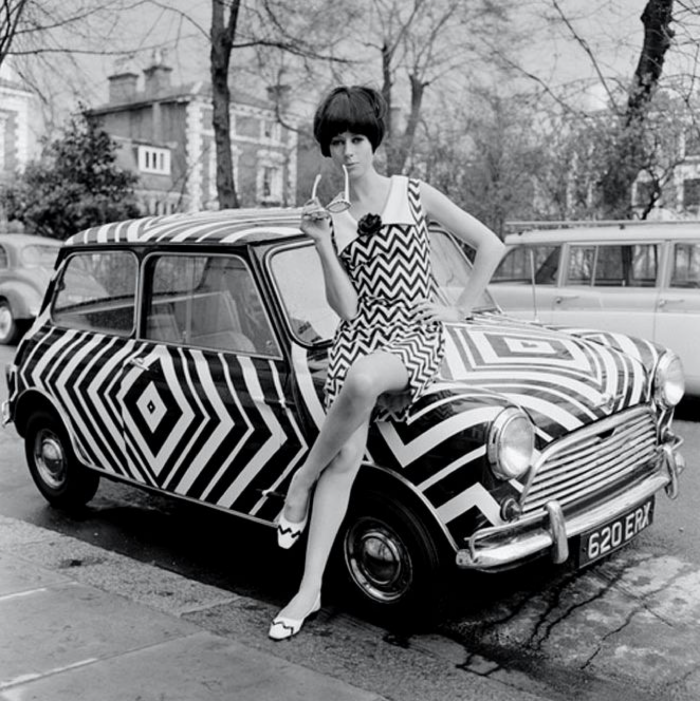Op art: fashion and art

Image source: Pleasurephoto – WordPress.com
OP ART: FASHION AND ART
I believe that fashion is a social phenomenon, which describes historic events and ideas and expresses fully the period we live in.
In the 1960s Pop Art influenced society and flow of ideas, whereas Op art contaminated fashion.
Optical art developed quickly, and one of the foremost exponents of this artistic movement is Bridget Riley, the first woman to win the International Prize for painting at the 1968 Venice Biennale.
The main area of research of Op art is optical illusion, and it gives the viewers impression of movement.

Image source: https://freya1234blog.wordpress.com
The 1960s were a peculiar period.
Young people all over the world questioned about the future, searching for an alternative vision of life; and Op art fully adhered to the constant search for something new.
Matching shapes and colours in order to create an impression of three-dimensional movement fascinated fashion, as well. And so it was that fashion designers such as Ossie Clark in London, and Yves Saint Laurent in Paris won a place in history of fashion, drawing inspiration from Op art.
READ ALSO: Roberto Capucci: design becomes fashion,
Sartorial skills were needed to bring those psychedelic effects on clothes.
Thus, geometric blouses by Mary Quant and bon-ton checked and polka-dot clothes by Valentino appeared on the fashion scene. And then, there was her, Twiggy, a supermodel and a fashion icon of that period, whose wiry body was perfect for those circles which become squares and squares which look like circles, interlocking geometries, and stripes which chase without end.
It’s 1960s fashion, but, actually, it has never abandoned the catwalks.
Thus, whenever you choose clothes decorated with geometric patterns, think that your purchase might be an artistic choice, too 🙂
Follow me on:
About me
In this blog, I don't explain the history of art — I tell the stories that art itself tells.


